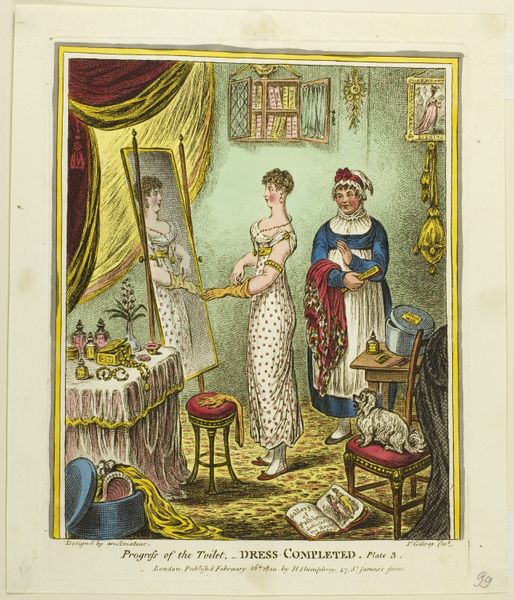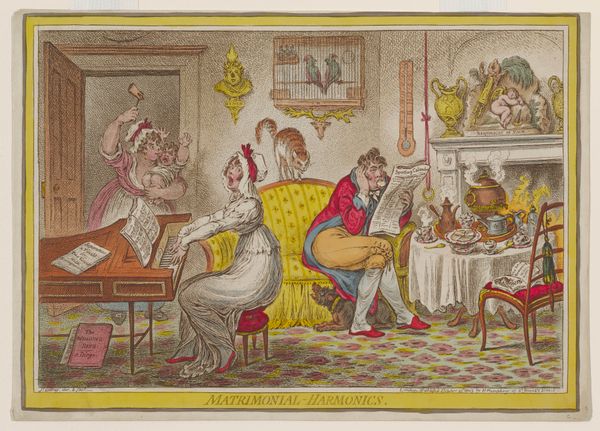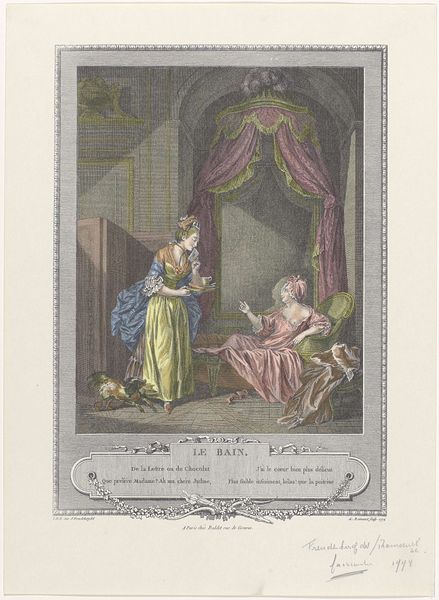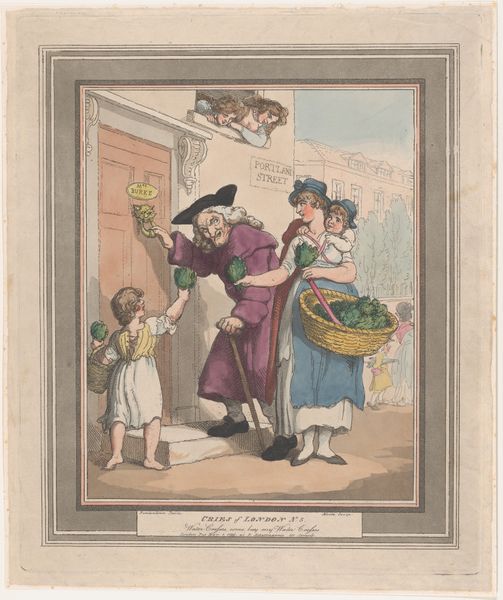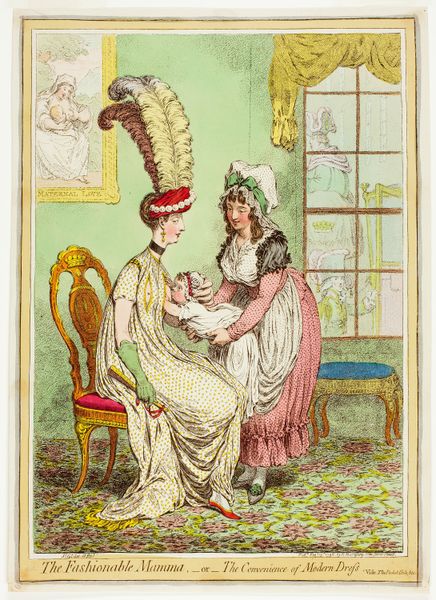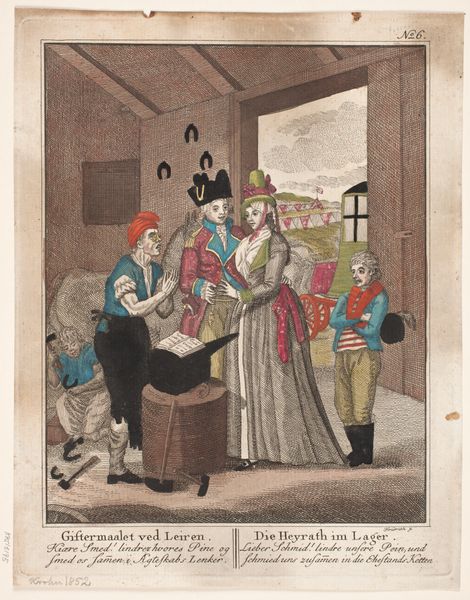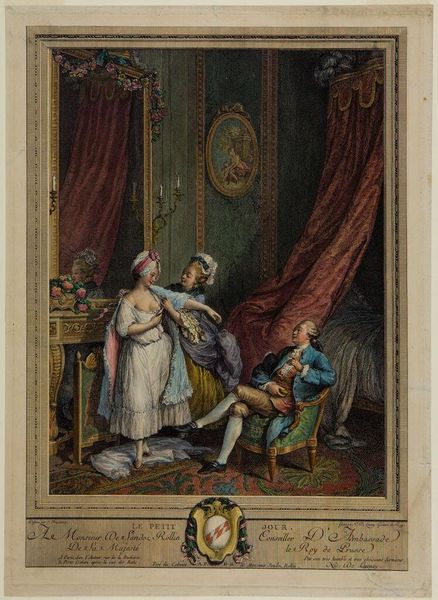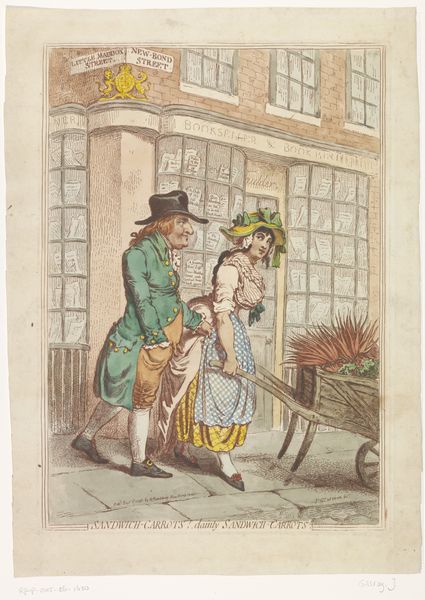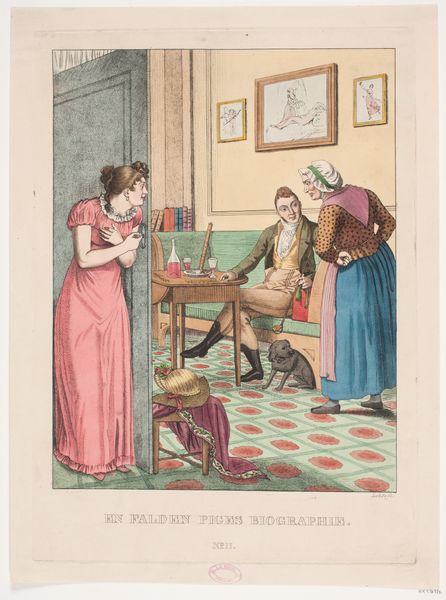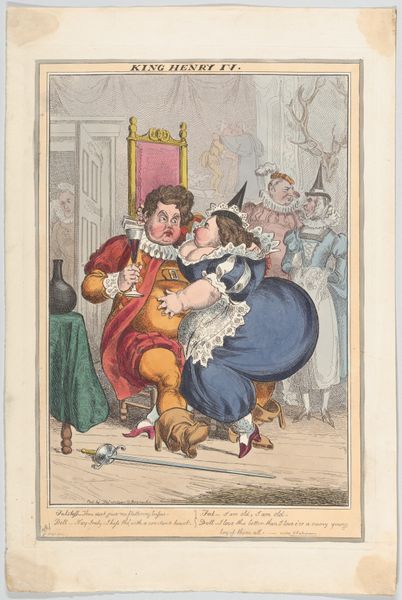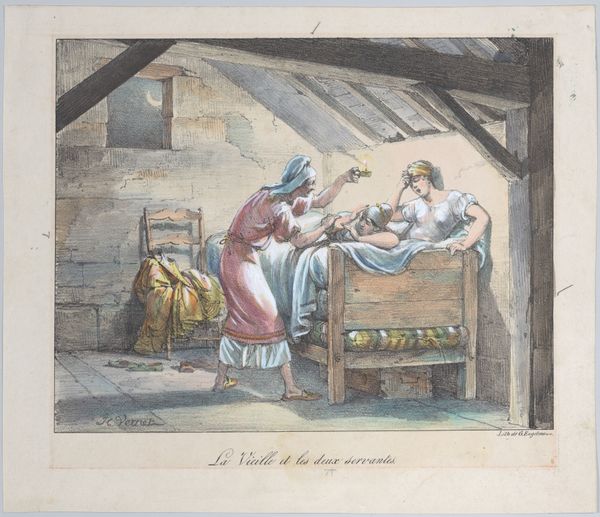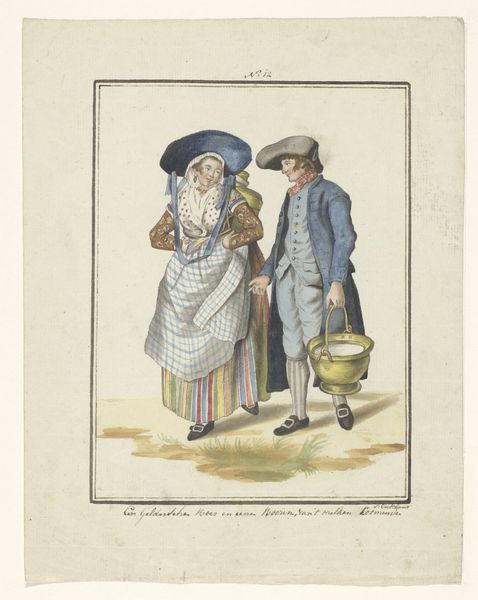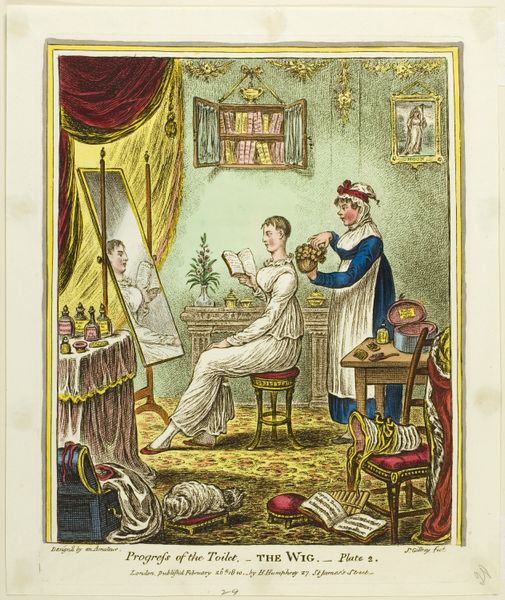
The Stays, plate one from Progress of the Toilet Possibly 1810
0:00
0:00
drawing, print, etching, paper
#
portrait
#
drawing
#
narrative-art
# print
#
etching
#
caricature
#
caricature
#
figuration
#
paper
#
romanticism
#
genre-painting
#
history-painting
#
academic-art
Dimensions: 257 × 215 mm (image); 280 × 223 mm (plate); 300 × 255 mm (sheet)
Copyright: Public Domain
Curator: Ah, yes, "The Stays, plate one from Progress of the Toilet," likely created around 1810 by James Gillray. It’s an etching, printed on paper, now residing here at the Art Institute of Chicago. My initial impression is one of controlled chaos, the eye zigzags everywhere. Editor: Controlled is an interesting word for this. My first thought was rigidity—everything seems forced into place, both the woman and the composition itself, doesn't it? The hyper-defined lines seem almost aggressively structured. Curator: I think the rigidity you’re observing is crucial. Corsetry, the act of lacing the "stays," as they were known, was deeply tied to constructing and constraining feminine identity. It’s not simply about fashion but about power, control over women’s bodies, and societal expectations. What we see isn’t merely an image, but an encoding of contemporary gender norms. Editor: Precisely! It speaks to a kind of architectural approach to the body, doesn’t it? The woman is being built, constructed almost like the room around her. Notice the contrasting textures, the softness of the fur of the dog versus the smoothness of her skin or the defined edges of her undergarments. Even the colour palette plays a role – that fleshy pink hemmed in by the rigid ochre of her stays. It's masterful. Curator: And it is indeed worth delving into what those compositional and stylistic elements reveal, as this print comments on ideas of luxury, class, and performativity. Consider also how Gillray implicates us, the viewers, in this process of scrutiny. What are we invited to consider beyond mere physical appearance? What does it mean to participate in a gaze that upholds, even reinforces, systemic power imbalances? Editor: The mirror adds another layer. She gazes not just at herself but toward the viewer, while also the mirror reflects what appears to be an anthropomorphic likeness for further visual consumption. Very clever. So it becomes a study in self-surveillance. It brings a completely contemporary view of social expectations into sharp relief! Curator: It truly invites us to reflect on these intersecting power dynamics within representation, reminding us of how they operate even today. Editor: Well, I find my appreciation for Gillray's print deepened, seeing now past its beautiful textures and clever mirroring, but also the powerful social critique it holds.
Comments
No comments
Be the first to comment and join the conversation on the ultimate creative platform.
